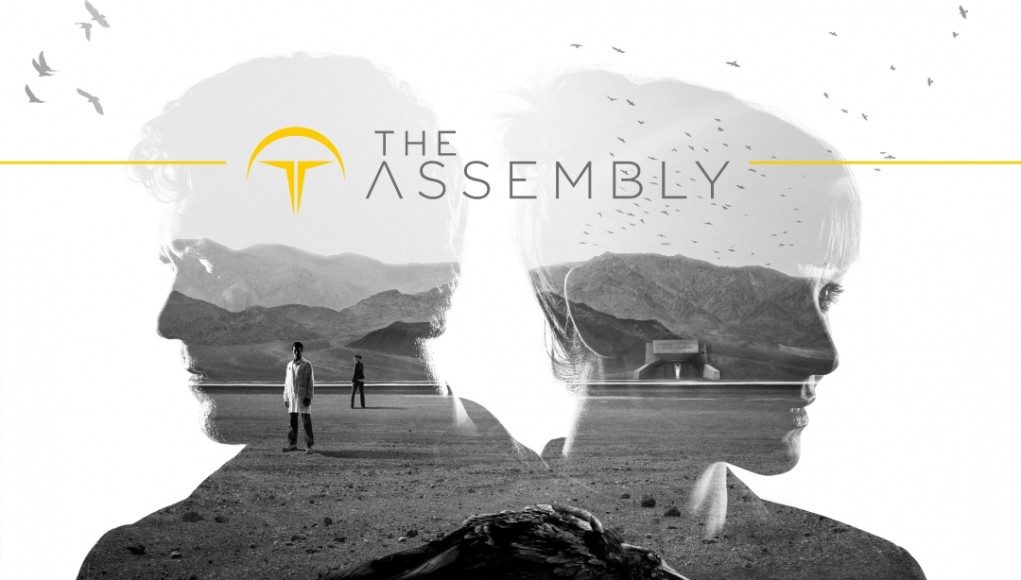 Rob Morgan is the writer of The Assembly, and he spoke last year at GDC about narrative design in VR and the importance of accurate body language in NPCs to maintain a sense of presence. He returned to GDC this year to talk about some of his lessons that VR can learn from writing stories in AR. He has a lot of interesting insights about how to use ambiguity and implication to drive narratives within a first-person story to allow a user to have a more immersive and personalized experience.
Rob Morgan is the writer of The Assembly, and he spoke last year at GDC about narrative design in VR and the importance of accurate body language in NPCs to maintain a sense of presence. He returned to GDC this year to talk about some of his lessons that VR can learn from writing stories in AR. He has a lot of interesting insights about how to use ambiguity and implication to drive narratives within a first-person story to allow a user to have a more immersive and personalized experience.
LISTEN TO THE VOICES OF VR PODCAST
My interview with Rob last year was one of my top 10 favorite podcasts that I’ve done because he has so many interesting insights about what’s unique and different about VR as a storytelling medium. He was the first person to point out to me the importance of body language cues in NPCs to maintain a sense of immersion within a story, and that the lack of believable social interactions with artificial characters can break presence and disrupt your suspension of disbelief.
Part of the magic of storytelling is that we allow ourselves to believe in the overall context of a story as well as the individual motivations of each of the characters. But the problem within an immersive story where the user is playing the protagonist is that you actually know very little about who the identity that user and what’s really motivating them. So instead of creating a well-defined set of motivations for the main character within the context of the story, Rob suggests using the mechanism of ambiguity to allow enough spaciousness within the story for the viewer to project their own identity into what they’re doing and why.
In my interview with Devon Dolan about the four different types of stories in VR, he makes the distinction of whether the character is a spectator and ghost within the experience or whether the character is a part of the story and has some agency within it. If you are a character in the story, then Rob says that some of the essential questions that the user will be asking are “Who am I?,” “What is my relationship to what is happening around me?,” and “How much can I affect it?” In that way, becoming the main protagonist within an interactive story becomes an interface to the experience.
One useful mechanism that Rob has discovered to help immerse you deeper within a story in VR is to have other characters implicate you in some way. You may have a secret or be accused of a murder, or they may just tell you, “Just act normal.” As soon the other characters make an assumption or assertion about your motivations as to why your doing something, then it allows you to clarify your own internal sense of what you’re doing and why. Then if you start to internalize or express that sense of agency within the story, then it allows the user to take their roleplaying to the next level and to get really emotionally hooked within the story.
Virtual and augmented reality also opens up new types of genres and stories that were previously impossible before. Conflict and growth is the heart of drama, and a lot of films and video games use the trope of external combat to express this. But Rob sees the potential to explore stories in VR and AR that are much more about internalized emotional conflicts within the main protagonist / player of the experience.
There’s a number of moral dilemmas within The Assembly including a specific moment where the player has to decide whether or not to press a metaphoric “evil” button. His goal is to not have the player use their rational mind to calculate the costs or benefits of the action, but to get to the point where the user makes more of gut decision as to whether or not it feels good or bad. It’s a much more visceral experience and memorable experience if it’s felt in their emotional body rather than a result of an abstracted mental process.
Rob believes that the canvas for all storytelling is within the space between the user’s ears, and that VR has the capability to evoke a level of immersion within a story that goes beyond what was possible before. He says, “We are ALWAYS dealing with mixed reality, whether it’s AR or VR, because the reality at the center of the experience is always the player.” And by using the mechanism of ambiguity and implication, then you’re able to both have more of an impact on allowing players to express their identity within the story but also exert some sort of direction or control in how the story unfolds. Leaving the story open-ended enough will allow the user to fill in the blanks with their own story, and in the end create an experience that will be more personal and leave a deeper impression.
Rob is a freelance writer for immersive technologies, and you can read more of his thoughts at @AboutThisLater or on his blog.
Become a Patron! Support The Voices of VR Podcast Patreon
Theme music: “Fatality” by Tigoolio







